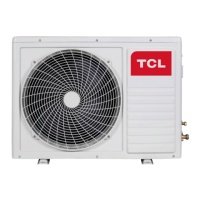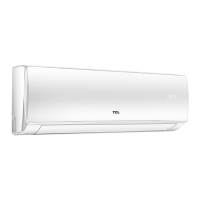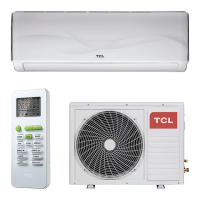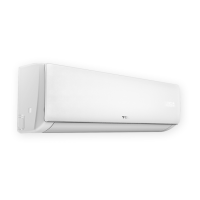9.2 Sound attenuation
The sound pressure level Lp[dB] at r[m]from a point sound source is composed of the following equation.
Lp = Lw + 10 log (Q/4πr2 + 4/R)
Lw : Power level of sound source
R : Real integer
Q : Directional factor (Spherical sound : 1, Semi-spherical sound: 2)
Generally the noise level Lpr (dB) at r[m] from the sound source is
Lpr = Lps - 20 log r + C
* Lps : Sound source level (dB)
C: Characteristics of sound sources including a point sound source and plane sound source
And the noise level Lp1 and Lp2 at r1 and r2 from noise source is
Lp1 = Lps-20 log r1 + C, Lp2 = Lps - 20 log r2 + C
Therefore, eliminate Lps, and Lp2 = Lp1 + 20 log r1/r2
Example) In a condition the four condensers of noise
level 50dB are placed parallelly, what is the
complex noise at point A? And what is the
sum of noise at background noise 35dB and
1m distance?
1) The noise level at point A of each aircon is ;
Lpa = Lpb = 50+20 log 1/2 = 44.0
Lpc = 50 + 20 log 1/3 = 40.5
Lpd = 50 + 20 log 1/4 = 38.0
2) Considering the noise source, the complex noise level is;
L =10 log(10
44
/10+10
44
/10+10
40.5/
10
+10
38
/10+10
35
/10)
= 48.5(dB)
9.3 Allowable level of noise
1) NC curve
NC curve as an abbreviation of Noise Criteria is a
curve expressing the allowable level by frequency for
noise evaluation.
For NC 50, the band level at octave frequency band
1200-2400Hz is at 50dB and the high level is allowed
at low sound side. To inhibit to NC50, the result of
octave band analysis at that sound should be below
NC50 curve.
2) Allowable level of noise

